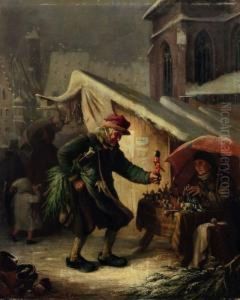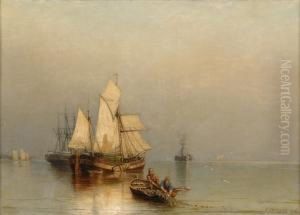Franz Carl Herpel Paintings
Franz Carl Herpel was a German sculptor born on February 5, 1816, in Kassel, Germany. His artistic journey began under the tutelage of his father, who was also a sculptor, providing him with an initial exposure to the craft. Herpel's talent and passion for sculpture led him to further his studies at the Academy of Fine Arts in Munich, where he was significantly influenced by the neoclassical style, prevalent during that period.
After completing his studies, Herpel returned to Kassel, where he embarked on a career that would see him creating various works, ranging from busts and statues to monumental sculptures. His style evolved over the years, but he remained predominantly influenced by neoclassicism, with a keen focus on the beauty of form and meticulous attention to detail.
One of Herpel's most notable contributions to the world of art was his involvement in the restoration and completion of figures for the famous Hercules monument in Kassel. This work not only showcased his exceptional skill and dedication to the craft but also cemented his reputation as a sculptor capable of handling projects of significant scale and historical importance.
Throughout his career, Franz Carl Herpel received several commissions for public monuments and sculptures, which were well-received and admired for their artistic merit and craftsmanship. Despite the acclaim, he remained a somewhat private figure, dedicated to his work and the pursuit of perfection in his art.
Franz Carl Herpel passed away on December 4, 1891, in Kassel. Though not as widely recognized today as some of his contemporaries, Herpel's contributions to German sculpture and his dedication to the neoclassical style have ensured his place in the annals of art history. His works continue to be studied and admired for their beauty, precision, and expression, serving as a testament to his skill and artistic vision.













